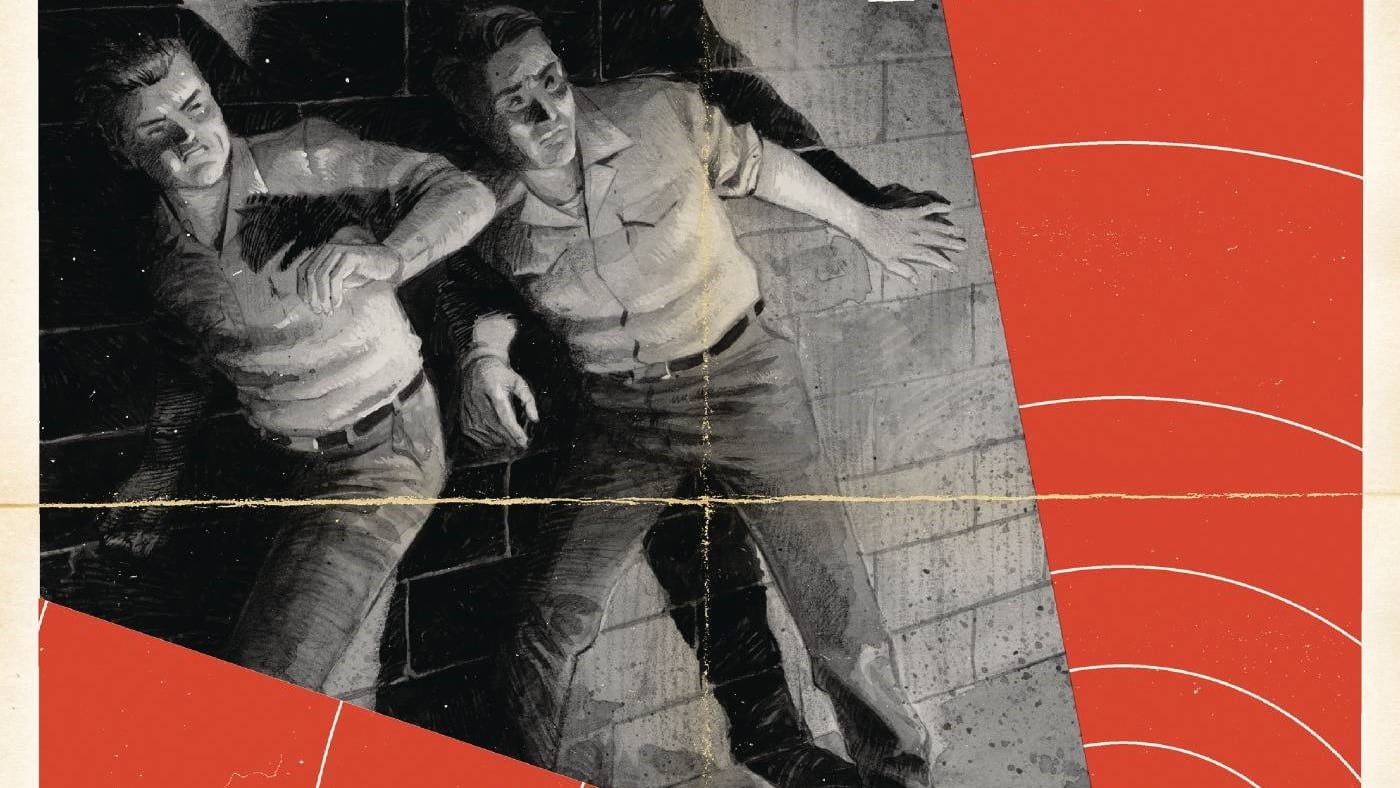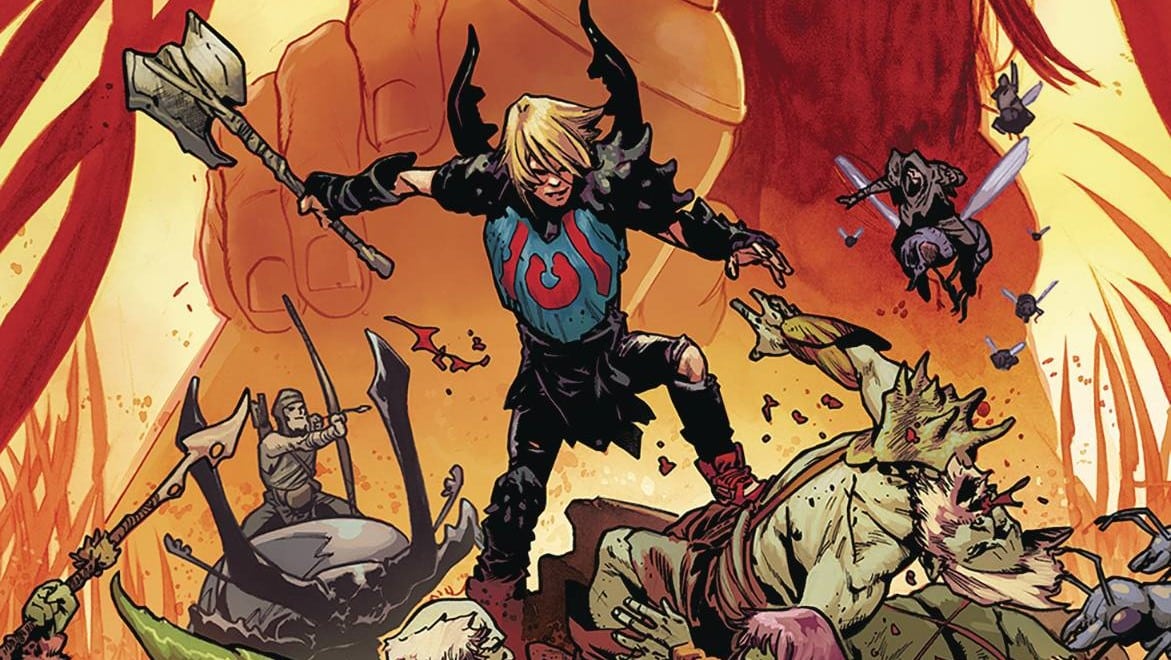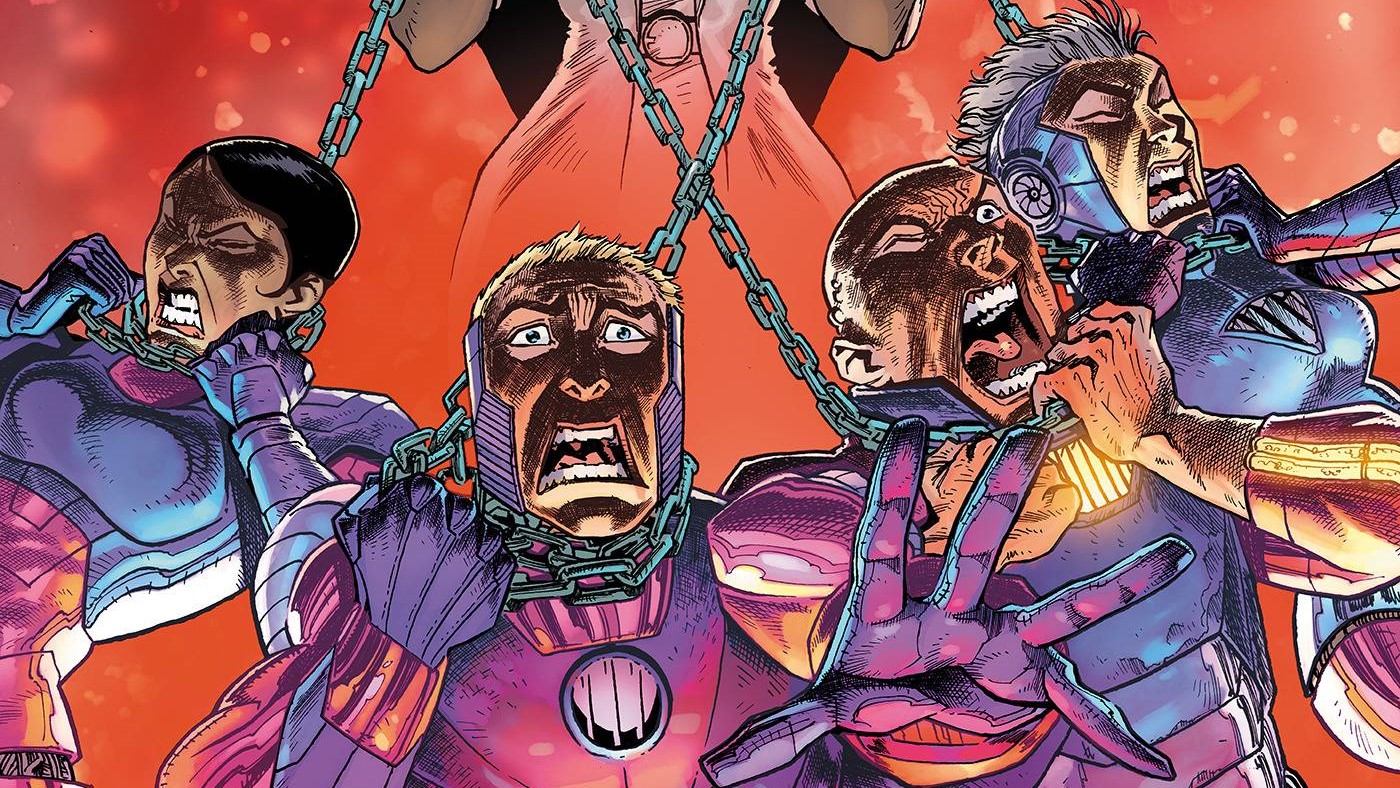What if the last 60 years of American history was a carefully orchestrated conspiracy designed to teach the president who really runs the country? Wouldn’t that be something? Vishal Gullapalli, Forrest Hollingsworth and Will Nevin team up to talk over The Department of Truth #4 by James Tynion IV, Martin Simmonds, Aditya Bidikar, Dylan Todd and Steve Foxe.
Will Nevin: With last week’s roundup of issues #1-3 under our collective belts, we can now get down to the business of regular monthly coverage of Department of Truth with this here #4, a fine, fantastic thing of a thing that may only be susceptible to the expectations game (but more on my bullshit later). Forrest, what’s your topline takeaway?
Forrest Hollingsworth: We talked with the editor of the series, Steve Foxe, on the AIPT Comics Podcast recently, and he confided in us that the book is doing well enough to guarantee that the team will get to tell the full story the team wants to tell — that affords a certain amount of creative freedom and assuredness that a book like Department needs to succeed. That being said, did I expect the narrative to go the places it did in just the fourth issue? Absolutely the fuck not. Am I glad it did? Yes. A bold, daring and direct issue with both a clear mission statement and yet a lot to discuss.
WN: And Vishal, what was your big-picture read before we get into the details?
Vishal Gullapalli: My big-picture read is simply that this book got a lot more direct and a lot more ambitious than I expected. I was expecting the subject matter covered here to be either built up to and tackled toward the end of the series or outright avoided so as not to cause a stir, but Tynion and Simmonds clearly have no qualms diving into the muck. I respect them a lot.
WN: *cracks knuckles* Let’s do this.
Wa, Wa, WaPo
WN: This issue opens with shadowy surveillance footage of what turns out to be a Washington Post reporter and editor trying to cover a grand unifying conspiracy theory of American government. (More on that in a bit.) Anyway, I like how this scene specifically references the Post and its evil billionaire by day, OK-ish newspaper owner by night and presumably day as well, Jeff Bezos. (By the way, did you know the Post has a practice of including Amazon links in its stories? Incredibly unethical!) Forrest, you had the idea to dive into this topic first — what do you think this issue has to say about “the media” and its place in a 21st century democracy?
FH: Of all the things I was surprised by in this issue, I have to say I was especially surprised to realize this is really the first explicit inclusion of the nightmare that is American media in the text. Our opening is an intentionally obfuscated and digitized scene that mimics real-life recursion of media and governmental or capitalistic interference (per your reference to Bezos above). We’re invited to question the place of the Fourth Estate in a world where truth is malleable and collaborative. If there is no universal truth, what are journalists the arbiters of? What service or function do they serve to the people, to systems of justice?
In an apparent condemnation of the 24/7 news cycle — don’t focus on the erroneous details, focus on the goal, as Lee says — Tynion takes the time to call out this values quagmire in relation to iterative reporting and veracity. What is the nature of a story? Do we devalue it by not waiting until it is more coherent or accurate? Something that is true today might not be true tomorrow, and it might never have been true at all. What if the people in control of the details aren’t the good guys? What if they are?
It’s a narratively dense and revealing line of questioning, and I don’t have an answer for a lot of these, but that’s not the point so much as it is to open the questions to discussion, and to expose the inherent and messy humanism underlining them for both the reader and for Cole, who is feeling lost and, fittingly, hyper-focused on the issue that most immediately affects him.
VG: I think an important facet of this that’s pointed out in this issue is that the people running the news media, the people doing the investigation and reporting on the world as they see it, are frequently not bad actors or directly pushing for their reality to take over. The journalist who’s found this unified theory is not trying to present it as reality but just uncover the truth. And in a world where truth is malleable and subject to the whims of consensus, these ambitions become a lot more interesting. There’s almost a sense of nobility to it, something that becomes especially necessary in order to create a consensus for reality to attach to, and I’d really love to see this idea explored further in the series.
WN: As an official Professor of Journalism, you won’t catch me decrying “the media” — there are smart outlets and dumb ones, good actors and purveyors of disinformation alike. The role of journalists, as I see it, has always been to provide context to information; to me, that’s the process of reporting and delivering the news. I’m not sure how that fits in here, but I think that’s a good point to make anyway.
Like A Beautiful Mind, But Without Opie’s Schlock
WN: Judging by the cover, I assumed we were in for a look at the Clinton body count, a conspiracy theory that’s been around for 30 years and suggests Bill and Hillary got rid of anyone not named Newt Gingrich or Anthony Weiner. But Tynion went for something much, much bigger and vastly more compelling: a rich alternate narrative of the last 60 years of American history that stitches together the Kennedy assassination, 9/11 and QAnon into a tapestry more coherent than the proponents of the individual conspiracies can offer. I found those pages absolutely hypnotic. Vishal, what did you think?
VG: “Hypnotic” is definitely the best word to describe it. Something I really appreciated about the previous issue was that it really dug into the mindsets of the people espousing these conspiracy theories, beyond just being hateful. Like, yes they are hateful and doing terrible things, but Tynion’s going for how they internally justify what they’re doing. And that’s what we got with this issue. This cohesive story serves not to be a believable version of reality, but to be a comprehensive explanation of how modern conspiracy theorists justify their absurd beliefs. I think it’s really important that the book tackles this without just dismissing wholesale, because while these theories don’t deserve any sort of benefit of the doubt, it’s worth digging into their cause and point out exactly why they exist.
Simmonds is also a massive part of how well this lands. The iconography slowly gets more and more demonic as the explanation of this gargantuan theory continues, which does a fantastic job of showing how an idea that seems innocuous at first leads to people going off the deep end. QAnoners didn’t start out believing in a Satanic Deep State, they started out with a sense of discomfort and a need to justify it. This is definitely one of the most ambitious comics I’ve read this year.
[Will’s random note: As far as the Satanic Deep State goes, I hope the book eventually gets into adrenochrome, the bonkers idea lifted straight from Monsters, Inc. that Democrats are scaring children and harvesting recreational drugs from their bodies.]
FH: Tynion also uses the comprehensiveness of the theory to accentuate why people get lost in them. It’s a narrative that touches every aspect of our lives; it justifies why you personally haven’t been successful; it speaks to why you feel disillusioned or left out, and most importantly, it delivers a sense of self satisfaction, that you are one of the select few who has discovered the real secret history of the United States. Would Cole be able to unpack his own trauma with the right clues? No, because the work that needs to be done is found elsewhere, but you can see why it would be tempting.
It doesn’t matter that most of these connections are tenuous and wouldn’t stand up to scrutiny, it matters that they — as Vishal has said better than I could — justify what you’re already feeling (most of which are actually the effects of late-stage capitalism, but that’s neither here nor there until somebody does a comic on Das Kapital, and I get to write about it). It’s furthermore indicative of the way conspiracy theories are used to justify each other, too, as I mentioned in our previous article about the link between the Satanic Panic and QAnon. You become increasingly susceptible to their sway when you aren’t moored to truth — either willingly or not.
WN: One thing that made me a little nervous about the issue is that in bringing together this grand narrative, it seemed to break away from the “one conspiracy a month”/X-Files monster-of-the-week formula that made me fall in love with this book. Thankfully, I can put those fears to sleep with the March solicits: #7 is all about UFOs and the men in black.
Cole Turner Gets Wet
WN: At the end of the issue, our man Cole has to make a big choice — basically whether to pull a ripcord and get out while he still can or to do something that seems so dastardly that there’s no coming back from it. It was a compelling moment, one that I thought the art — especially Cole’s facial expressions — sold well. Friendoes, what did you think?
FH: “Are you the good guys?” is such a suckerpunch of a line. So equally inspiring and deflating that it really stunned me, and I think fittingly, Cole as well. Altruism and Good are not the same thing, and sometimes they can be directly at odds — an issue I think isn’t lost on Tynion, and one the text wants to directly investigate. Accepting that is part of life, but doing so in the shadow of some unseen force weighing the odds is much more unfair and difficult for one person to bear. Department bends toward this grim finality in a way I appreciate and find deeply narratively important — but also need suitable time to process. Dale Cooper never had to shoot people in the head!
VG: I’ve gotta agree about the art, too — the tears on Cole’s face on the last page tell a complete story, and the entire last page is a genuine masterclass of storytelling. The panel of realization from the two poor sods Cole has to kill, and Lee’s face as he watches are just an incredible way to evoke emotion and feeling. I feel like I found Lee endearing because the concept of him running the Department of Truth after being the nexus of so many conspiracy theories was really amusing, but this issue has made it very clear that I should not find him endearing in the slightest. He’s got absolutely no qualms with doing very dirty work, and I feel like he’s definitely not going to be the best man to be in charge of the department in the long term. Then again, maybe moral purity is a hindrance for whoever’s in charge. I’m loving this internal conflict the book’s making me feel.
WN: Cole definitely makes A Choice here, and I hope it’s one he has to reckon with for a while. And that’s a great point about Lee, Vishal — he’s either the best guy for the department or the worst. I guess we’ll find out as this book unfolds.
An Eye for an Eye, A Truth for a Truth
- If you’re reading a pre-publication review PDF (this comics journo business is great, lemme tell you), the opening scene gets a little confusing, given that the art suggests a two-page spread but it’s not intended to be read that way. Visually, however, it’s an impressive feat.
- Outside the stylistic effect, it occurs to me that the coloring and outline of the speech bubbles throughout the series likely don’t match up to give the implication that everything that’s being spoken and done is “outside the lines.”








